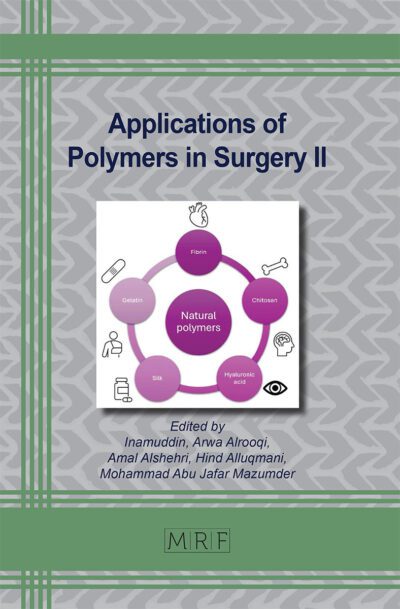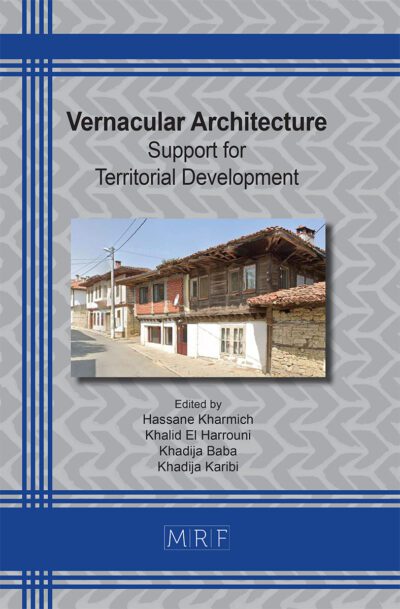–
Insights from crystal-plasticity-based predictions on deformation of an Mg-10Gd extrudate
STEGLICH Dirk, JEONG Youngung, ANDAR Mohammad Omar
download PDFAbstract. The mechanical behaviour of an extruded magnesium alloy was quantified in tension and compression along the extrusion direction. With the aid of EBSD measurements the material symmetry was examined, and discrete grain orientations were used to predict the multiaxial plastic behaviour along orientations perpendicular to the extrusion direction by means of the EVPSC formalism. It was found that the material is transversely isotropic, shows a small amount of distortional hardening and modest differences in hardening between the extrusion direction and the tangential direction. A phenomenological plasticity law was calibrated based on the predictions, which allowed performing the finite-element analysis of the expansion process of a vascular stent.
Keywords
Anisotropy, Plastic Work Contour, Differential Hardening
Published online 4/24/2024, 7 pages
Copyright © 2024 by the author(s)
Published under license by Materials Research Forum LLC., Millersville PA, USA
Citation: STEGLICH Dirk, JEONG Youngung, ANDAR Mohammad Omar, Insights from crystal-plasticity-based predictions on deformation of an Mg-10Gd extrudate, Materials Research Proceedings, Vol. 41, pp 1099-1105, 2024
DOI: https://doi.org/10.21741/9781644903131-121
The article was published as article 121 of the book Material Forming
![]() Content from this work may be used under the terms of the Creative Commons Attribution 3.0 license. Any further distribution of this work must maintain attribution to the author(s) and the title of the work, journal citation and DOI.
Content from this work may be used under the terms of the Creative Commons Attribution 3.0 license. Any further distribution of this work must maintain attribution to the author(s) and the title of the work, journal citation and DOI.
References
[1] Staiger MP, Pietak AM, Huadmai J, Dias G. Magnesium and its alloys as orthopedic biomaterials: A review. Biomaterials. 2006;27(9):1728-34. https://doi.org/10.1016/j.biomaterials.2005.10.003
[2] Hosford WF, Allen TJ. Twinning and directional slip as a cause for a strength differential effect. Metallurgical Transactions. 1973;4(5):1424-5. https://doi.org/10.1007/BF02644545
[3] Kelley EW, Hosford WF. The deformation characteristics of textured magnesium. Trans Metall Soc AIME. 1968;242:654-61.
[4] Jeong Y, Tomé CN. An efficient elasto-visco-plastic self-consistent formulation: Application to steel subjected to loading path changes. International Journal of Plasticity. 2020;135:102812. https://doi.org/10.1016/j.ijplas.2020.102812
[5] Steglich D, Jeong Y, Andar MO, Kuwabara T. Biaxial deformation behaviour of AZ31 magnesium alloy: Crystal-plasticity-based prediction and experimental validation. International Journal of Solids and Structures. 2012;49(25):3551-61. https://doi.org/10.1016/j.ijsolstr.2012.06.017
[6] Cazacu O, Plunkett B, Barlat F. Orthotropic yield criterion for hexagonal closed packed metals. Int J Plast. 2006;22:1171-94. https://doi.org/10.1016/j.ijplas.2005.06.001
[7] Hama T, Takuda H. Crystal plasticity finite-element simulation of work-hardening behavior in a magnesium alloy sheet under biaxial tension. Computational Materials Science. 2012;51(1):156-64. https://doi.org/10.1016/j.commatsci.2011.07.026
[8] Ball EA, Prangnell PB. Tensile-compressive yield asymmetries in high strength wrought magnesium alloys. Scripta Metallurgica et Materiala. 1994;31(2):111-6. https://doi.org/10.1016/0956-716X(94)90159-7
[9] Wiesent L, Schultheiß U, Schmid C, Schratzenstaller T, Nonn A. Experimentally validated simulation of coronary stents considering different dogboning ratios and asymmetric stent positioning. PLOS ONE. 2019;14(10):e0224026. https://doi.org/10.1371/journal.pone.0224026












